
E-mail: font@focusonnature.com
Phone: Toll-free in USA 1-800-721-9986
or 302/529-1876; Fax: 302/529-1085
 |
PO
Box 9021, Wilmington, DE 19809, USA E-mail: font@focusonnature.com Phone: Toll-free in USA 1-800-721-9986 or 302/529-1876; Fax: 302/529-1085 |
A Birding & Nature Tour
in
TEXAS
In the spring
FOR
bIRDS, BATS, BUTTERFLIES,
& OTHER NATURE
from rockport on the gulf
to the lower rio grande valley
AND THE EDWARDS PLATEAU
to the lower rio grande valley
AND THE EDWARDS PLATEAU
April 30 - May 9, 2010
(tour FON/TX-1
'10)
To include, at a prime-time
for Texas birding,
many, many birds.
And visits to caves with many, many bats.
Among the bird specialties:
the GOLDEN-CHEEKED WARBLER, BLACK-CAPPED VIREO,
GREEN JAY, and BUFF-BELLIED HUMMINGBIRD.
Notable birds in
the southern Texas during recent years have included
these that are normally seen in Mexico:
Crimson-collared Grosbeak, White-throated Robin, Social Flycatcher,
Rufous-capped Warbler, Golden-crowned Warbler, Tropical Parula,
Blue Bunting, and Green-breasted Mango
(Some birds such as these may be seen during this tour)
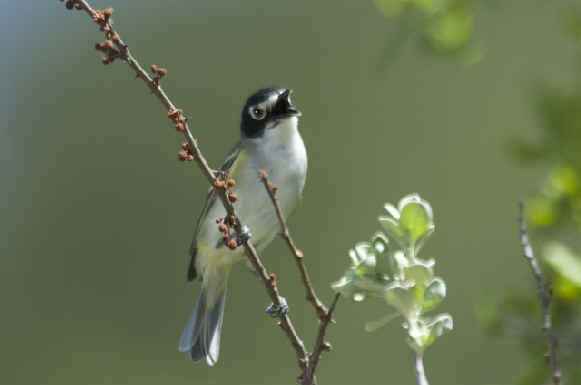
Black-capped Vireo in
Texas
(photo by Clair de
Beauvior)
Tour to be led by Armas
Hill
Links:
Birds during Previous FONT Tours in Texas (with some photos)
A Complete List of Texas Birds
A List of Texas Mammals, including Bats (with some photos)
A List of Texas Butterflies (with some photos)
Plants of the Desert & some nearby habitats (with some photos)
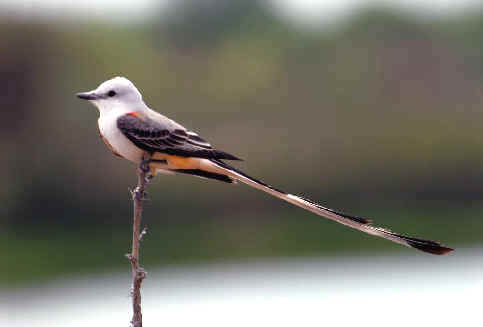
Itinerary (price follows):
Fri:
Apr 30 Arrival in San Antonio,
Texas. Our first Texas birding will
be at Mitchell Lake, north of San Antonio. From there, we'll go north to
Austin,
to be, just before dark, at the world's largest urban bat colony. In the spring,
about 750,000 Mexican Free-tailed Bats fly out, at the day's end, from under a
bridge, causing quite a spectacle. Across the street, a large sculpture entitled
"Nightwing" celebrates the bat. Overnight in Austin.
Sat: May 1 Travel, with birding along the way, from Austin south to the
Texas Gulf Coast, particularly to the coastal town of Rockport,
that will be our base for two days and nights.
We'll visit the the Aransas
National Wildlife Refuge (a place renowned for Whooping
Cranes from fall thru spring). The refuge, of over 50,000 acres, is
on the Blackjack Peninsula, and
incorporates a number of different habitats wooded sand dunes, brushlands, oak
"mottes", grass meadows, cordgrass prairies, tidal marshes, freshwater ponds, and
marine bays. About 8,500 acres is open to the public, and there is a 16-mile
auto loop-road. Nesting
birds on the refuge include: Pauraque, White-tailed Hawk, Northern Crested
Caracara, Purple Gallinule, Wilson's Plover, and Cassin's Sparrow.
Other wildlife of the refuge include: American Alligator, White-tailed Deer,
Collared Peccary (Javelina), Armadillo, and Coyote.
The first of two overnights in Rockport.

Northern Crested Caracara
(photo by Howard
Eskin)
Sun: May 2
After some morning birding in the area of Aransas we'll go inland to visit the refuge of the Welder Wildlife Foundation, west of Rockport. Encompassing nearly 8,000 acres, the refuge contains various habitats where, cumulatively, 372 species of birds have been recorded. Nearly a hundred of those species either nest or have nested. Typical South Texas nesting birds include: Wild Turkey, Common Ground Dove, Greater Roadrunner, Golden-fronted and Ladder-backed Woodpeckers, Ash-throated Flycatcher, Painted Bunting, and Cassin's Sparrow. Birds that nest at the ponds and lakes can include: Fulvous Whistling-Duck, Purple Gallinule, and Least Grebe. Overnight again in Rockport.
A male Painted
Bunting
There are many in Texas in April
(photo by Clair de
Beauvior)
Mon: May 3
Rockport, where we spent the two nights of May 1 &2, is on the Live Oak Peninsula. Large concentrations landbirds occur on the peninsula in migration, and during our time there we will have seen many birds of numerous species, as mid-April to mid-May is the peak time for birding there.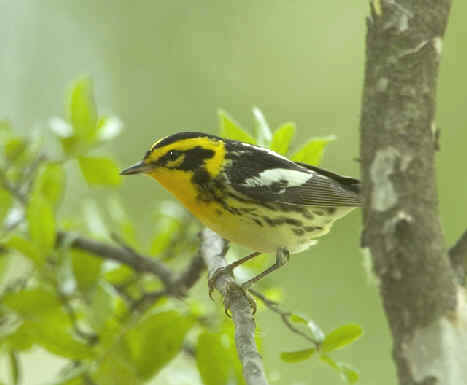
A female
Blackburnian Warbler
Many warblers can be seen along the Texas Gulf Coast in April
during a fallout of migrants.
A series of other Texas Warbler Photos follows this itinerary.
(This & those photos by Clair de
Beauvior)
Tue: May 4
Our first day of birding in the Lower Rio Grande Valley, one of the foremost areas of the US for birds. We'll see many, some of which only spill over a relatively few miles from Mexico.Wed: May 5
Another day with what should be fine birding in the Lower Rio Grande Valley, at 2 places renowned for birding the Santa Ana National Wildlife Refuge and the Bentsen-Rio Grande Valley State Park.Thu: May 6
After some additional birding at Bentsen, in the morning, we'll go further west in the Rio Grande Valley, to the bird in the area of the Falcon Dam and nearby Falcon State Park. Enroute, we'll stop at the Santa Margarita Ranch to look for the Brown Jay.
Ferruginous
Pygmy Owl (above),
Greater Roadrunner (below)
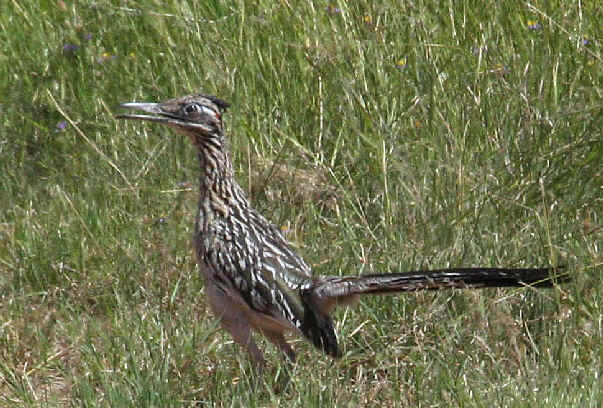
Fri: May 7 We'll do some
morning birding this day (as we like to do morning birding every day) in Laredo
at the grounds of the Laredo Junior College
and the nearby Lake Casa Blanca Park.
But then we'll be
driving north from Laredo toward the Edwards Plateau, where our two prime birding objectives with be specialties of that region of
junipers and oaks, the Golden-cheeked Warbler and the Black-capped
Vireo.
The overnights of Thu May 6 & Fri May 7 to be in Kerrville, near the
Edwards Plateau.
During those evenings, we'll be, at sunset, where a huge
flock of bats will depart from caves where they roost. Such a cave that
we'll visit in the area, near Fredericksburg, has as many as
2 million Mexican
Free-tailed Bats.
Also after dark, we'll
look for various mammals, nocturnal birds, and other wildlife.

Bats during a late spring
evening in Texas
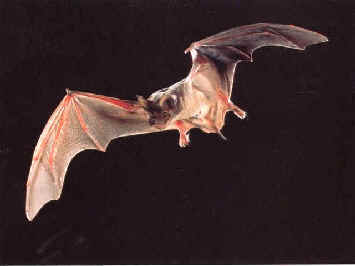
Sat: May
8
During this day, we'll see the 2 Texas bird specialties just mentioned, the Golden-cheeked Warbler
and Black-capped Vireo. Not only is the Edwards Plateau "the
place" for them in Texas, it's "the place" for them in
the United States. This day we should enjoy seeing an assortment of wildlife,
with birds of various kinds, some animals, butterflies, and maybe an
amphibian
or reptile in addition to a variety of plants. Late in the day,
we'll visit the Eckert James River Bat Cave
Preserve, a place with a huge number
of Mexican Free-tailed Bats reside. The following description relates to these
many bats that occur there:
"About 4 million female bats inhabit the cave from May through September.
Many of them are pregnant when they arrive from Mexico. They give birth to a
single offspring in June or July. The young bats grow rapidly and are able to
fly at about 5 weeks of age, They remain, however, with their mothers until they
return to Mexico in October.
About an hour or two before sunset, hundreds of bats flutter and chirp around
the mouth of the cave. Slowly, a stream of bats emerges and flies in a large
circle, low to the ground, just outside the cave entrance. These bats gradually
spiral upwards and form a dark funnel of flying mammals, reaching several
hundred feet into the evening sky. The bats at the top of the spiral break off,
forming columns that stream out over the countryside. The incredible torrent of
bats forms a densely packed "bat tornado" for about an
hour."
Other nature may well be found after dark. Overnight again in Kerrville.
Sun: May 9 After
some early-morning birding, our last for the tour, we'll head for the airport at
San Antonio for our afternoon departure for home.
Price: $1,995 per
person, based upon double occupancy
Single supplement: $295
Includes:
• All overnight accommodations.
• Meals, except dinners.
• Ground transportation in
Texas.
• Services of the birding
guide.
Does not
include:
Dinners. Drinks. Items of a personal nature.
Air fare. Airport
tax. Gratuities.
A deposit of
$400, per person,
is required to assure a place on each or either of the tours.
![]()
Some
Warblers in Texas in Late April & Early May
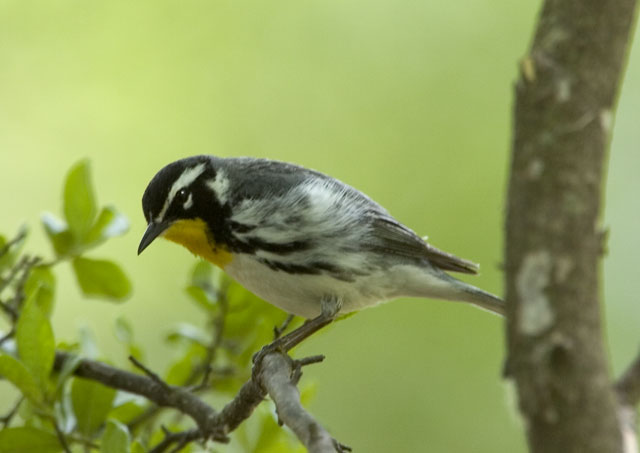
Yellow-throated Warbler
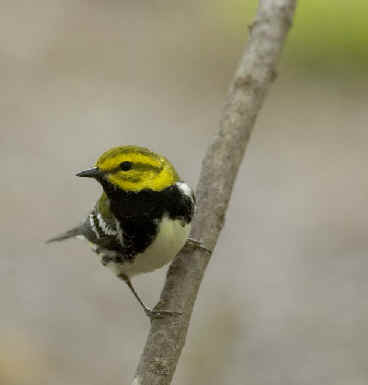
Black-throated Green
Warbler
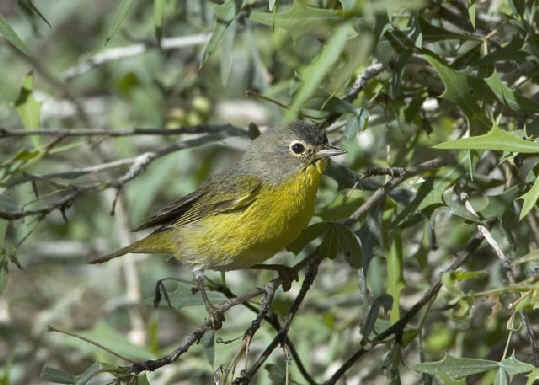
Nashville Warbler
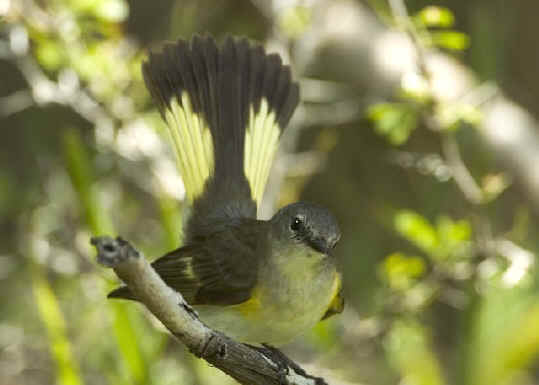
Female American Redstart
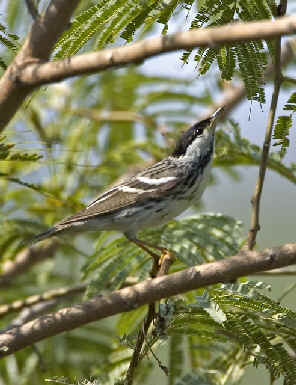
Blackpoll Warbler
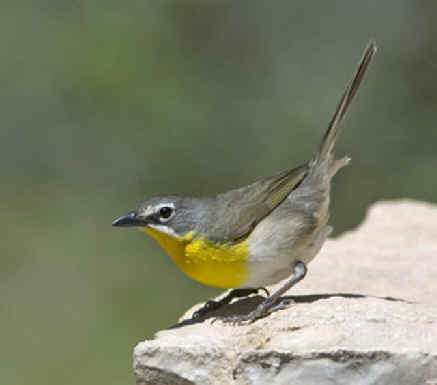
Yellow-breasted Chat